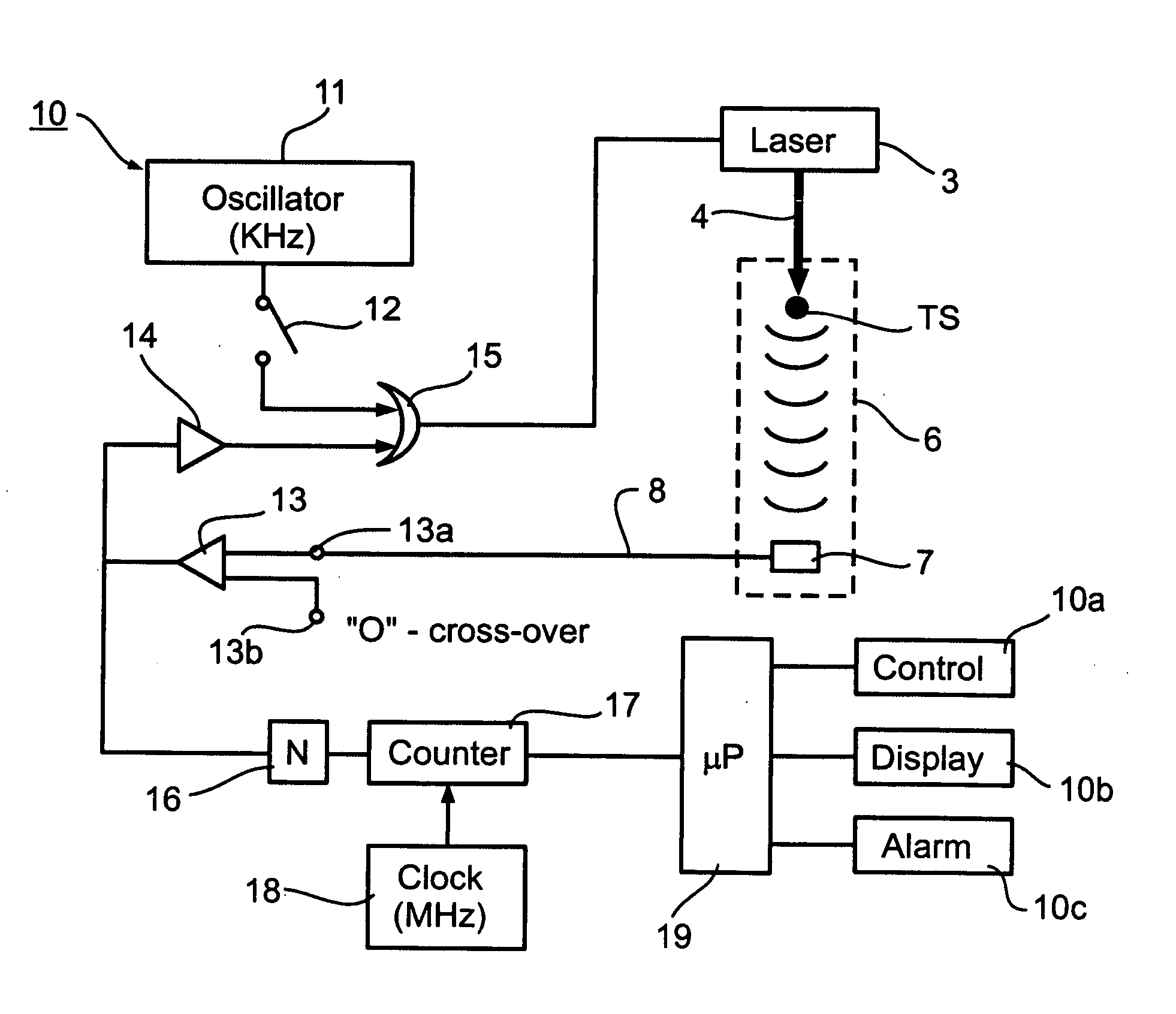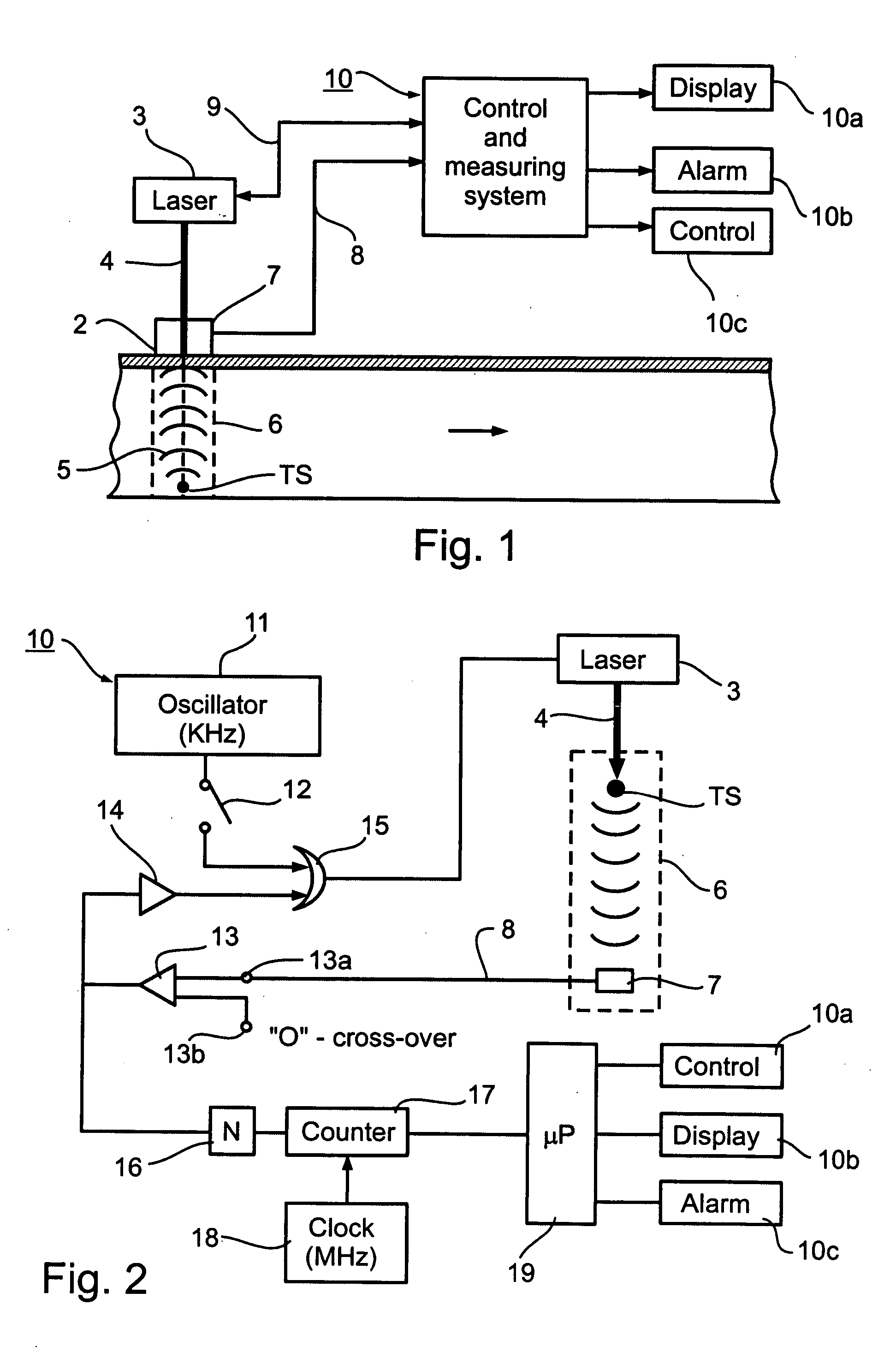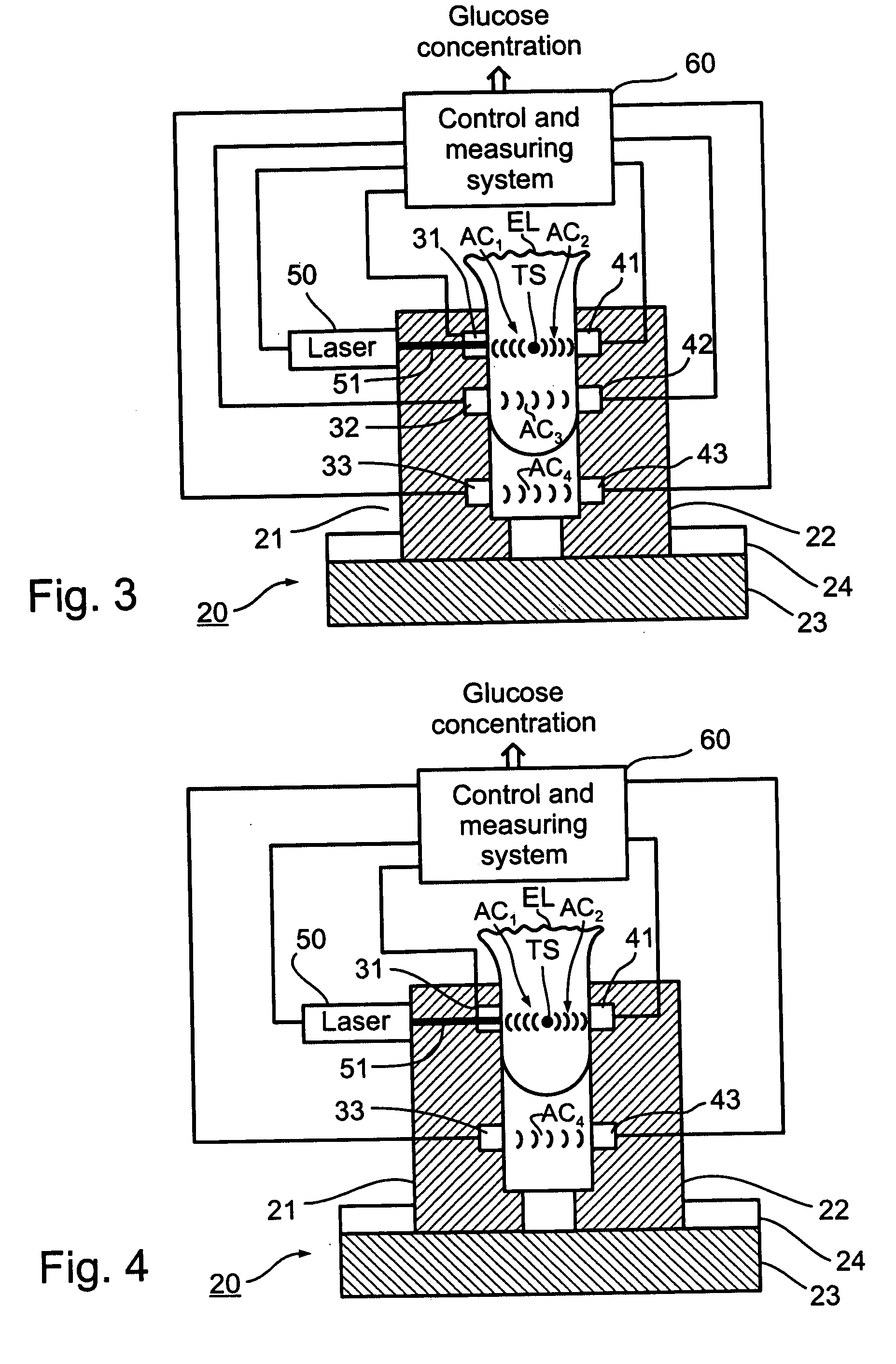Method and apparatus for non-invasively monitoring concentrations of glucose or other target substances
a technology of glucose or other target substances and non-invasive monitoring, which is applied in the direction of diagnostic recording/measuring, instruments, applications, etc., can solve the problems that the method utilizing this effect has not yet been implemented in a commercially available device or in a device which has obtained fda approval, so as to improve the accuracy and reliability of the final result, reduce the influence of extraneous influences, and accurate measurement
- Summary
- Abstract
- Description
- Claims
- Application Information
AI Technical Summary
Benefits of technology
Problems solved by technology
Method used
Image
Examples
Embodiment Construction
The Embodiment of FIG. 1
[0029] The apparatus illustrated in FIG. 1 is for non-invasively monitoring changes in the concentrate of a target substance TS in the blood flowing through a monitored site 2 of a person. As indicated earlier, the method described is particularly useful for monitoring changes in the concentration of glucose in blood. Therefore the target substance TS is hereinafter referred to as glucose, but it will be appreciated that the invention could also be used for monitoring other target substances in other bodies, such as other constituents of blood, or constituents of urine, constituents of other biological fluids or other types of fluids, e.g., industrial fluids, or constituents of other bodies, i.e., solids and gases as well as liquids.
[0030] The apparatus illustrated in FIG. 1 includes a laser 3 which applies laser pulses via an optical fiber 4 to a selected region of the monitored site 2. Laser 3 may include a single laser, or a combination of lasers, having...
PUM
| Property | Measurement | Unit |
|---|---|---|
| concentration | aaaaa | aaaaa |
| frequency | aaaaa | aaaaa |
| wavelengths | aaaaa | aaaaa |
Abstract
Description
Claims
Application Information
 Login to View More
Login to View More - R&D
- Intellectual Property
- Life Sciences
- Materials
- Tech Scout
- Unparalleled Data Quality
- Higher Quality Content
- 60% Fewer Hallucinations
Browse by: Latest US Patents, China's latest patents, Technical Efficacy Thesaurus, Application Domain, Technology Topic, Popular Technical Reports.
© 2025 PatSnap. All rights reserved.Legal|Privacy policy|Modern Slavery Act Transparency Statement|Sitemap|About US| Contact US: help@patsnap.com



